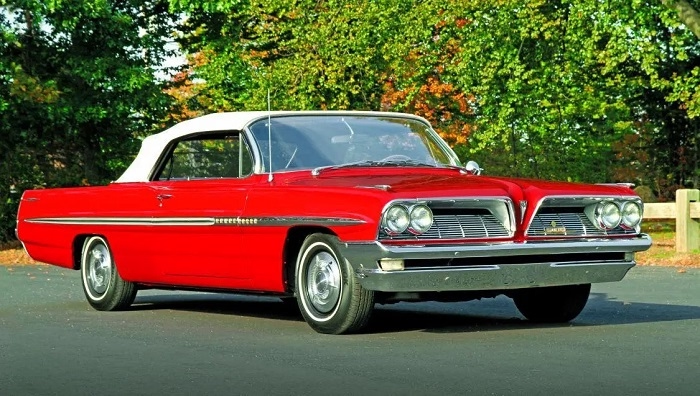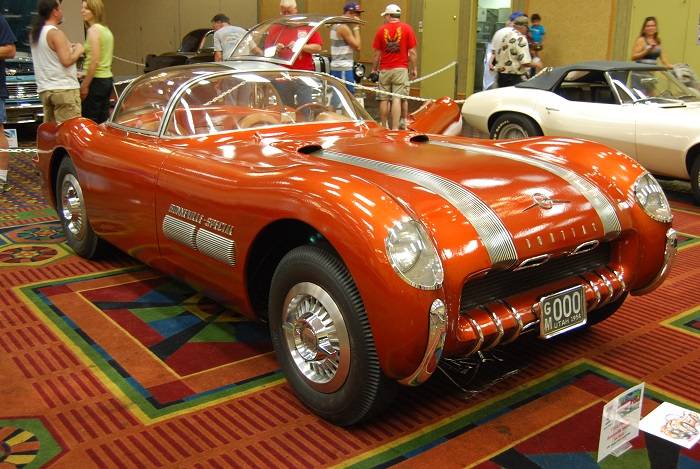In automobile history in America that would later turn into legends, Pontiac’s Bonneville has its own niche. Manufactured by General Motors under Pontiac’s nameplate, the Bonneville was a symbol of power, luxury, and sophistication. Pontiac’s power and luxury for the people at a low cost for almost five decades was the full-size car.
Throughout its initial production as a low-volume convertible in the late 1950s to its selling days as a family sedan in the 2000s, the Bonneville automobile lasted through various design, technological, and cultural eras. It represented the emblem for muscle car buyers, family cruisers, and collectors.
In this ultimate guide, we will reveal the peaks and valleys of the Bonneville car: its birth, generation change, most essential features, top models, cultural impact, pros and cons, and why it is still close and dear to the hearts of the fan base.
Origins of the Bonneville Car
The Pontiac Bonneville was first released in 1957 as a special edition convertible for one time, and it was named after the Utah Bonneville Salt Flats, an ever-present location for the land speed record attempt. The very name gave it the image of a high-performance vehicle with good credibility.
- 1957 Introduction – It was manufactured only 630 times, so it was a low-production vehicle.
- Positioning – Pontiac’s priciest and most powerful car of the time.
- Signature Features – Fuel injection system, V8 engine, and luxury trim.
With this launch, the Bonneville solidified its centuries-long reputation for performance and prestige.
First Generation (1957–1960)
Not just was the first generation more than a performance convertible—it launched Pontiac as a performance buyer car.
Key Highlights
- Was available as a full-size performance luxury convertible.
- Equipped with 347-cubic-inch V8 and as much as 315 horsepower.
- Fuel injection system was a breakthrough in its time.
- Low production made it very collectable.
This further established Bonneville as Pontiac’s best-of-the-line model.
Second Generation (1961–1964)
Bonneville returned as full-line production model in coupe, sedan, and convertible body.
Design
- Streamlined look with longer and wider body.
- Jet-age look in chrome trim and space-age instrument panels.
Engines
- 389 to 421 cubic-inch regular V8 engines.
- Car’s high-performance models made the car highly popular with speed enthusiasts.
Reputation
Room, power, and luxury combined was what made it a family car still captivating fans.
Third Generation (1965–1970)
Bonneville was a nameplate reserved for the masses this time around.
Exterior
- Aggressive styling.
- Stacked headlights and raked front grille.
Performance
- Added high-performance V8s up to 370 horsepower.
- Had performance models such as the Bonneville 421 High Output.
Impact
As Pontiac’s luxury-performance vehicle.
Competed with Buick Electra and Oldsmobile 98.
Fourth Generation (1971–1976)
Bonneville grew as American vehicles migrated to size and comfort.
- Size grew and wheelbase grew.
- Comfort over sportiness was stressed.
- Luxury amenities like plush interiors and high-quality radios were provided.
Engines
Large displacement V8 engines but at the cost of fuel efficiency.
Market Shift
Lost favor with the 1973 oil crisis as the gas mileage was poor.
Fifth Generation (1977–1981)
Pontiac downsized the Bonneville with the fuel crises.
Changes
- Sleeker and lighter body for improved fuel economy.
- Streamlined styling instead of flashier previous models.
- More practical with less luxury image compromise.
- It was still a popular full-size model when it was downsized.
Sixth Generation (1982–1986)
It was a departure from the basics.
- The Bonneville was relocated to a front-wheel-drive platform (H-body).
- It was downsized once more to address consumer concerns about gas mileage.
- Sleek, more aerodynamic look.
Although disappointing to high-performance buyers, it made Pontiac competitive in the 1980s.
Seventh Generation (1987–1991)
The Bonneville with advanced technology and convenience features.
Most Notable Features
- Digital clusters on some trim levels.
- Advanced safety features.
- More angular, more modern styling.
- The SSE (Special Sport Edition) trim added more sportiness with more performance suspension and sports looks.
Eighth Generation (1992–1999)
Golden years for those who desired luxury and performance in a single car.
Design
- Streamlined, aerodynamic look.
- Large, luxurious interior space.
Performance
- With the 3.8L V6, and supercharged variant used in SSEi models.
- The supercharged engine produced up to 240 hp, at last providing the Bonneville with some actual performance credentials.
Popularity
Most popular Bonneville generation.
Everybody’s sweetheart for comfort and sporty reactions.
Ninth Generation (2000–2005)
Last generation of Bonneville to carry it into the new century.
Features
- Shared platform with G-body models.
- Smooth, more angular styling.
- Focus on safety and technology: airbags, stability control, ABS.
Engine Options
- Base 3.8L V6.
- Supercharged V6 on high-line models.
- Briefly offered with a 4.6L Northstar V8 in the GXP trim (275 hp).
Pleasant, but discontinued in 2005 when sales began to lag.
Bonneville Trims and Special Editions
Throughout its model run, the Bonneville was sold in many different trims to appeal to various purchasers.
- Base – Low-budget full-size sedan with few extras.
- LE – Midtrim with more features.
- SSE – Sport model with more aggressive styling.
- SSEi – Supercharged performance model.
- GXP (2004–2005) – Northstar V8 power, high-performance model.
These models made the Bonneville attractive to a mass demographic audience.
Bonneville in American Culture
The Bonneville was not merely a vehicle – it was the American lifestyle.
- Symbol of 1960s post-war prosperity.
- As an icon of American motorcar driving on film, television, and in popular music.
- Hood ornament of sweetheart of families’, executives’, and enthusiasts’.
- Even as a demonstration of retro automobile looks, particularly the 1960s and 1970s models.
- Otherwise, a bridge between the performance driver and the luxury buyer with a luxury car.
Strengths of the Bonneville Car
- Streamline appearance – 90’s lean look to the fins of the 50’s.
- Performance Options – V8 and supercharged engines provided the power.
- Comfort – Roomy interiors equipped with luxurious touches.
- Heritage – Long production life that developed loyalty.
- Collectibility – Pretty soon and special edition highly sought after today.
Weaknesses of the Bonneville
- Gas mileage – Big motors gas guzzlers.
- Size – Too big for day-to-day city driving.
- Resale Value – Decreases later in model years.
- Competition – Had to face stiff competition from Oldsmobile, Buick, and imports.
These weaknesses proved to be its downfall.
Comparison With Competitors
| Model | Strengths | Weaknesses |
| Pontiac Bonneville | Luxury + performance, low price | Gas mileage, doubtful sales |
| Buick Electra | Smooth ride, luxury image | Less sporty, more expensive |
| Oldsmobile 98 | Luxury amenities, roomy | Less sporty |
| Ford Taurus | 1990s market leader, gas guzzler | Less flashy than the Bonneville |
The Bonneville was never separated from more traditional full-size vehicles by anyone except for its sporty appearance.
Bonneville Collectibility Today
The Bonneville is an extremely coveted classic vehicle to own.
- 1957 Bonneville Convertible – Highly coveted by collectors and scarce.
- 1960s Muscle Models – Big-block V8s make them auction hots rods.
- 1990s SSEi Models – Supercharged power makes them highly sought after.
- 2004–2005 GXP – Rare end seen Bonneville models, Northstar V8.
Prices are variable, although original restored ones cost tens of thousands of dollars.
Legacy of the Bonneville Automobile
The legacy of the Bonneville endured:
- Helped Pontiac establish its image as cut-rate brand to performance-luxury contender.
- Put American sedans in the position where they no longer had to decide between comfort and performance.
- Affected the design of later Pontiacs like the Grand Prix and G8.
- Although discontinued, it is a nameplate that continues to hold prestige.
- Although Pontiac itself ceased business in 2010, the Bonneville is the crowning glory of the company.
Frequently Asked Questions about the Car Bonneville
When did they initially manufacture the Pontiac Bonneville?
The Bonneville was initially manufactured in 1957 as a low-production convertible.
What was the most performance-oriented trim for the Bonneville?
Exceptions to the rule are the 2004-2005 GXP with Northstar V8 and the 1990s SSEi with supercharged V6.
Why did they discontinue manufacturing the Bonneville?
It was also withdrawn in 2005 because of weak sales and GM restructuring.
Are Bonnevilles collectible yet?
Yes, particularly the 1957 model and the high-performance models.
How did the Bonneville get its name?
It was named after the Bonneville Salt Flats in Utah, which are renowned for speed records.
The Bonneville car was not just a Pontiac knockoff – it was a Luxury convertible produced in limited quantities in its formative years, and subsequently as a supercharged, V8-powered car, the Bonneville always combined adrenaline with practicality.
Even after its cancellation in 2005, the Bonneville remains a classic old-school favorite among automobile fanatics. The combination of sinister appearances, performance traits, and cult status in popular culture continue to secure the spot of the Bonneville in the automobile legacy for generations to come. For all American automobile fans, the Bonneville brings them memories of the good ol’ times of romance and imagination for four wheels.



